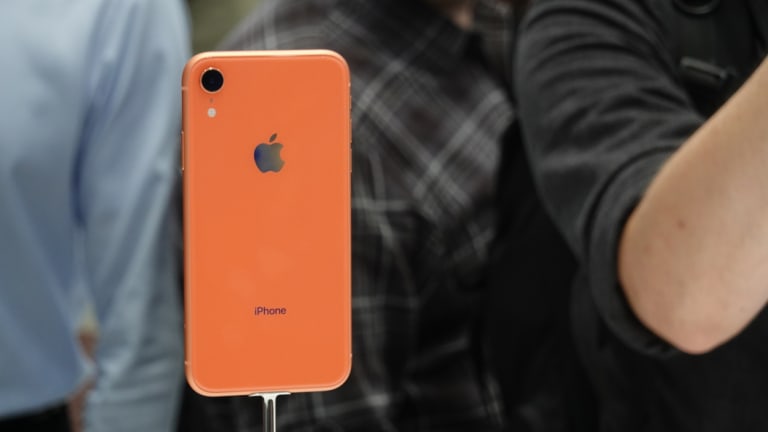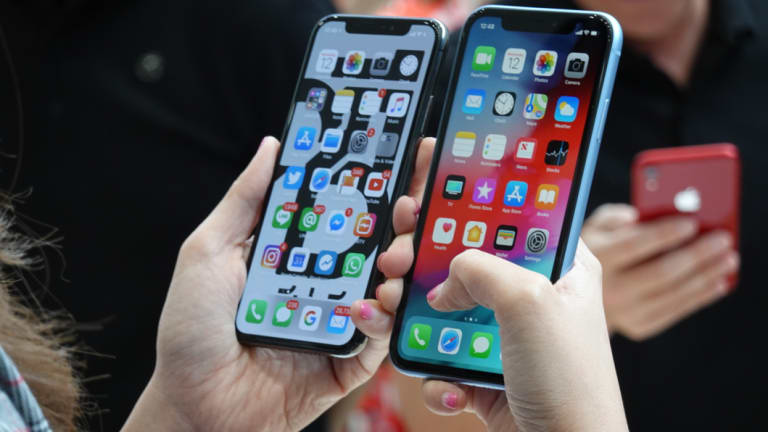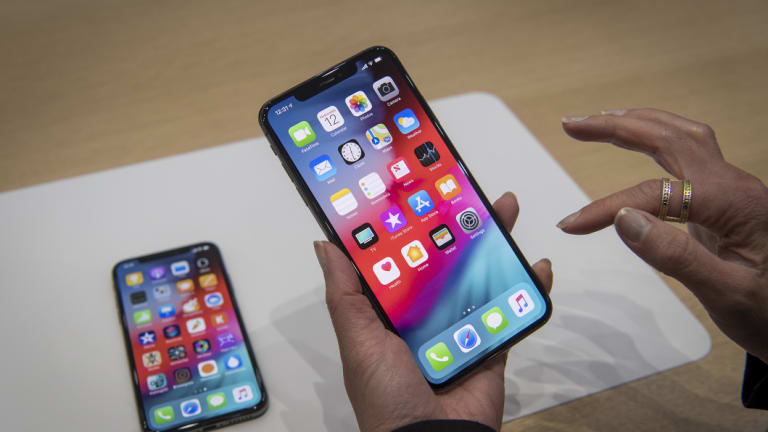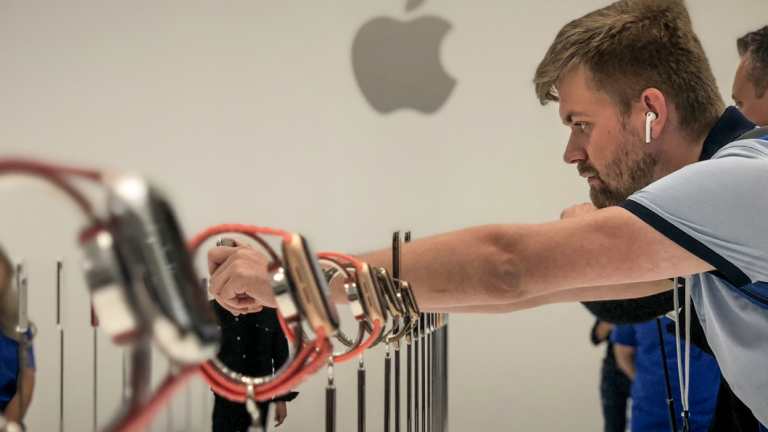
And because it supports the same A12 Bionic chip, the XR is just as fast as the XS and XS Max, but more on that below.

Though it only has a single rear camera, the XR can still do portrait mode.
Photo: Peter WellsIt’s great to see Portrait Mode coming to the single lens iPhone XR. Google’s Pixel previously supported Portrait Mode with a single lens, and Apple’s A12 seems more than capable of the image processing needed to pull it off. Using Portrait Mode produced great results in the hands on demo area, possibly a little faster to focus. The real test will being using Portrait Mode with my 3-year-old in darker settings; she normally moves to fast for reliable portrait mode pictures.
Another feature that both Samsung and Huawei have had in their handsets, that Apple has only just introduced, is the ability to adjust the depth of field in Portrait Mode once a shot has been taken. Apple’s interface shows an f-stop slider to adjust the bokeh, and the results are great. Again, this will need more testing, but my first impressions were positive.

The iPhone XS, alongside the larger but less expensive iPhone XR.
Photo: Peter WellsFinally, the iPhone XR may not have an OLED screen, but it has one of the best LCD displays I’ve seen. Apple refers to it as "Liquid Retina", though I’m not sure why. Either way, the display matches the excellent iPad Pro screen, with True Tone and a massive colour gamut. Photos and video looked incredible for an LCD screen.
Plus sized iPhone users are going to love the XS Max, but the device looks ridiculous in my tiny hands. Holding it in portrait orientation, I could barely reach above the midway point of the display. But that’s ok, I was never the intended audience for the large screen, and thankfully the regular iPhone XS has feature parity with the larger model. If you can hold a device that big, you do get a few software bonuses, particularly in landscape mode, with Mail, Messages, and Safari (and presumably third party apps using the latest SDK) showing more information on screen.

The massive iPhone XS Max.
Photo: SuppliedAs with any 'S' year, the improvements are mainly around speed, power and battery life. It was hard to discern the speed increases in the crowded hands on area above the iPhone X, and it may not be that worthy an upgrade if you have last year’s iPhone X, but those coming from an iPhone 7 or below will be impressed. iOS is snappy throughout; this is partly due to speed improvements with iOS 12, but it makes Apple’s hardware stand out above the competition.
Another area that Apple makes improvements on year over year is the camera. But this is never something you can really test with a brief hands on, and I’ll never take photos as good as the demo shots that were on the demo model. A full review of the camera and phone will be coming soon.
Arguably the "most improved" device in the lineup is the new Apple Watch Series 4. The new watches are larger, but not absurdly large on my tiny wrists. Series 4 comes in 44mm and 40mm, replacing 42mm and 38mm models respectively. Thankfully the bands remain the same size, so if you’ve invested in Apple Watch bands you can use them on the newer models.
After a brief time on my wrists, I’m torn on the new sizes. The 38mm always felt too small, the 42mm just right. This time around I might go for the smaller of the models, the 40mm, but then I preferred how much easier it was to see a lot of information on the larger display, especially the newly designed watch faces, with support for even more complications. Complications are the name given to both the smaller app launching icons, and the more interactive live widgets, that live on the watch face .
The interface takes advantage of the new screen size to fit more complications on each watch face, as well as giving more visual information to each "app card" as you scroll through multitasking. All in all an improved experience navigating information on a tiny screen.
Of the raft of new complications Apple announced, the new favourites complications is the most useful. Assign a contact as a favourite on your Watch face, and not only is there smiling face always present on the watch face, but tapping them gives you instant access to call or send them a message.

The new Apple Watch Series 4.
Photo: Mags KingLast year’s Series 3 was a massive leap above its predecessors — and all other smart watches in the market — when it came to speed, and Series 4 is noticeably faster again. Tapping a complication immediately fills the screen with that app, and swiping back, or through to another app, is just as fast. Part of this could be software; watchOS 5 feels slightly more polished, with less unnecessary transitions, even on a Series 3.
One of the better ways of setting up the Apple Watch to work with that smaller screen is creating two or three watch faces filled with different complications and swiping between them; for example, a watch face filled with exercise apps, another for work, another for home.
Swiping between these faces is fast on the Apple Watch, and almost showing off, the watch animates any of the live complications as soon as they appear on screen. Subtle differences like this make the Watch feel faster again, with Apple’s software and hardware working together to wring the most out of this tiny computer.
The author travelled to California as a guest of Apple.
Peter Wells works at Swinburne University and is a technology commentator in his spare time. He is an award-winning journalist who currently appears on the Daily Tech News Show.









 Add Category
Add Category